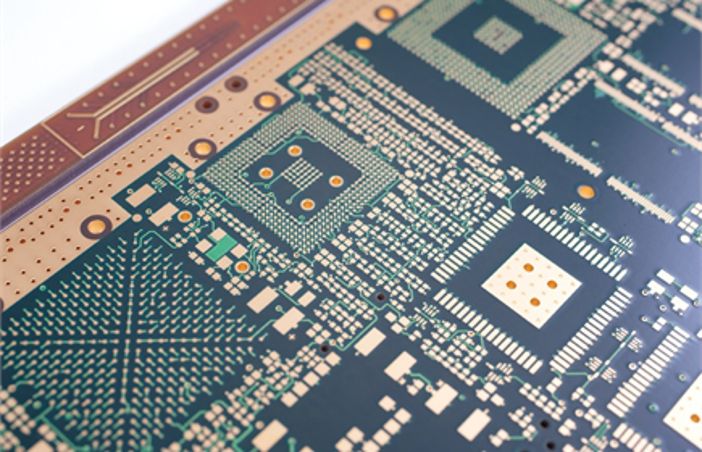
by Tom Gregory, 6SigmaET product manager, Future Facilities
No matter what industry you’re in, thermal considerations are fundamental when it comes to designing electronic equipment. While it’s inconvenient when electronics cut out in factory machinery or a consumer device, the stakes are much higher when those electronics are part of a critical system onboard an aircraft, missile or spacecraft.
With a risk of catastrophic consequences, aerospace engineers need to be confident that their products are safe, reliable and able to withstand any eventuality.
Unlike in other industries, aerospace electronics must survive in some of the world’s harshest environments, endure extreme weather conditions and handle regular fluctuations in temperature, airflow and pressure. As a result, the process of estimating how temperature changes and heat flow will impact a device’s reliability becomes very complex.
While these challenges have always existed, new trends and innovations are driving further change in the industry — and introducing a whole host of new considerations for aerospace engineers.
That’s why we decided to assemble a panel of thermal management experts to explore the latest challenges in aerospace electronics and uncover how today’s thermal engineers are dealing with them.
1. Higher power density
Traditionally, aerospace engineers could easily fit all the functionality they needed into one small chip that dissipated around thirty to forty watts. However over time, the need for greater functionality to be embedded onto compact more highly engineered solutions has presented a challenge for thermal management.
Today these chips dissipate anything upwards of one hundred watts, which is 3x the previous power. This, coupled with the use of components that are getting smaller and smaller with a higher power density, means that these chips run a greater risk of facing thermal complications.
In other industries, engineers could address these issues through air cooling mechanisms. But in high-altitude aircraft, traditional air cooling solutions like fans can get clogged with ice. When it comes to electronics bound for space, the opportunity for natural convection or airflow simply doesn’t exist, so thermal engineers must look for new ways to dissipate heat away from critical components.
To ensure these components don’t overheat, our panel of experts recommend liquid cooling and cold plates as the most viable solutions currently available.
2. Exposure to extreme environments
Another challenge is the harsh environments that aerospace electronics are typically exposed to — from the coldest depths of Alaska to the hot and sandy desert of Saudi Arabia. Not to mention how these devices are also subject to things like extreme vibrations, with takeoff and landing putting a heavy mechanical burden on equipment and internal electronics.
At the same time, more commercial and industrial components are being used in the aerospace industry. Many of these components are not specifically rated to the limit required to work successfully in the environments they are being exposed to.
Given this trend, it’s vital for thermal engineers to thoroughly test their designs for every environment. Running components through numerous parametric variations in a variety of environments using advanced thermal simulation software like 6SigmaET is a significant step in validating the reliability of devices.
3. Slow adoption of 3D printing
Aerospace engineers are gradually turning to 3D printing early in the design process. According to our panel of experts, 3D printing is a faster, more flexible and more agile way to create prototypes. These prototypes are often used for a number of purposes, including testing that the device will fit within a particular environment.
Although not yet using 3D printing for final products because of the industry’s conservative nature, our experts agree that the aerospace sector will eventually have to adopt this technology for prototypes and eventually, end products.
When it comes to thermal management, for example, traditional microchannel heat sinks leave non-uniform channels in the cold plate. By using 3D printing, engineers can create a uniform surface finish and be more precise about channel sizes, which gives engineers far greater control.
Thermal simulation in aerospace electronics
If you combine the demand for high reliability in extreme conditions with the constant need for higher power in a conservative industry, the thermal design of aerospace electronics equipment is under far greater pressure than other industries.
To complete projects efficiently, accurately and safely, thermal aerospace engineers must be provided with the right tools for the job.
CFD software gives aerospace engineers a unique visual representation of the temperature and airflow inside equipment. Through effective thermal analysis, engineers can create accurate simulations of their designs and make informed decisions when it comes to offsetting heat and designing cooling systems that will have a significant impact on the reliability and performance of electronic devices.
 Tom Gregory is product manager for 6SigmaET, a thermal simulation software for electronics.
Tom Gregory is product manager for 6SigmaET, a thermal simulation software for electronics.
Tom has worked at 6SigmaET for five years, and is responsible for marketing and supporting customers on the 6SigmaET side of the business. He earned his Higher National Certificate in Electrical and Electronics Engineering at Abingdon & Witney College, Abingdon, UK. He then earned his Master’s Degree in Electronics and Computer Engineering at the University of York, City of York, UK.




